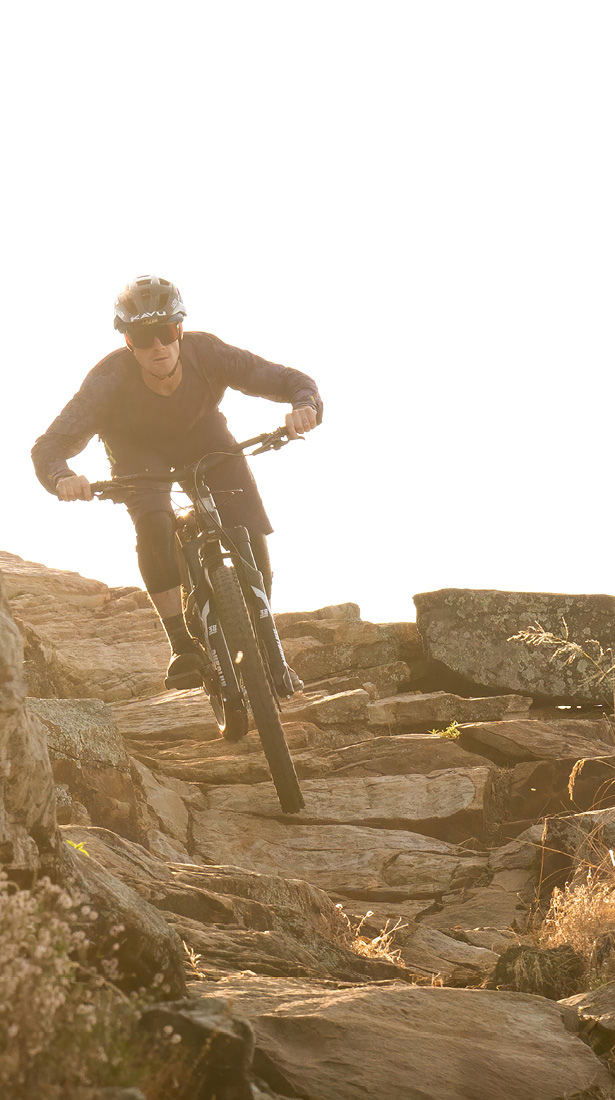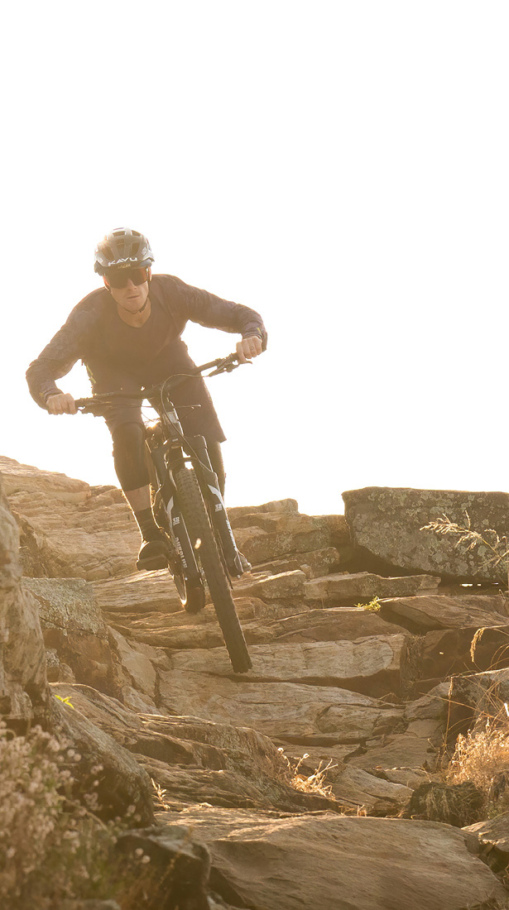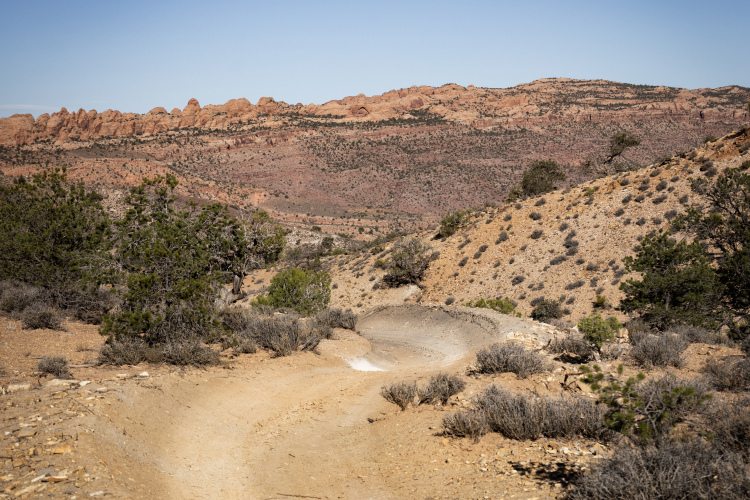
The updated Liv Pique Advanced cross-country bike has a bit more travel for 2024, improved performance, and a new look.
Previously a straight, 100/100mm travel front/rear XC bike, the latest Liv Pique Advanced gets 120/115mm of travel front and rear. This places the bike toward the more aggressive end of XC race bikes and gets pretty close to downcountry territory, though the geo is still XC-oriented for the most part.

2024 Liv Pique Advanced geometry
The Liv Pique Advanced has a slacker, 67° head tube angle for improved descending and a steeper, 76° seat tube angle that more than compensates on the climbing side. Reaches are longer across the board while the chainstays are shorter for more nimble handling.
| XS | S | M | L | |
|---|---|---|---|---|
| Seat tube length | 380 | 410 | 440 | 470 |
| Seatpost insertion | 203 | 233 | 263 | 293 |
| Seat tube angle (Degrees) | 76 | 76 | 76 | 76 |
| Top tube length | 555 | 570 | 585 | 600 |
| Head tube length | 90 | 95 | 105 | 115 |
| Head tube angle (Degrees) | 67 | 67 | 67 | 67 |
| Fork rake | 44 | 44 | 44 | 44 |
| Trail | 112 | 112 | 112 | 112 |
| Wheelbase | 1121 | 1137 | 1154 | 1170 |
| Chainstay length | 435 | 435 | 435 | 435 |
| Bottom bracket drop | 45 | 45 | 45 | 45 |
| Stack | 599 | 603 | 612 | 622 |
| Reach | 406 | 420 | 432 | 445 |
| Standover height | 748 | 767 | 770 | 791 |
| Handlebar width | 760 | 760 | 760 | 760 |
| Stem length | 60 | 60 | 70 | 70 |
| Crank length | 165 | 170 | 170 | 175 |
| Wheel size (front) | 29″ | 29″ | 29″ | 29″ |
| Wheel size (rear) | 29″ | 29″ | 29″ | 29″ |
Frame features
Liv managed to drop nearly a third of a kilogram (297g) off the weight of the Pique Advanced while also improving the frame’s stiffness. The brand says the bike is both torsionally stiffer and delivers 10% more pedaling stiffness thanks to upgraded carbon materials.
This time around the Pique ditches its bent top tube and goes straight. This gives the bike a more modern look, though it does give the bike a significantly higher standover height that smaller riders may not appreciate. For example, the XS bikes previously featured a 693mm standover; now it’s 748mm as you can see from the geometry chart above.

Size XS frames now feature a set of water bottle mounts while larger sizes include two sets of mounts. Four builds will be available worldwide; in the US buyers can choose from the Liv Pique Advanced 29 1 and Advanced 29 3 builds, priced at $7,500 and $4,500 respectively.


Tested: 2024 Liv Pique Advanced Pro 29 0
The 2024 Liv Pique Advanced Pro 29 0 is an advanced cross-country bike designed with performance and precision in mind. Though it caters to race-minded female riders, it is also fast and fun for the average Jane. The Pique combines high performance with a sleek and modern aesthetic, making it a standout in the realm of cross-country mountain bikes. The ultra lightweight construction, advanced suspension technology, and refined geometry combined allows for agile handling and a stable feel on various types of terrain for casual and professional riders alike.
When Liv asked me to review a cross-country bike, I was skeptical. Most bikes I own and have reviewed are categorized somewhere between downcountry, trail, and all-mountain. Additionally, there are only a few trails in my neck of the woods that are considered cross-country, which made this an interesting test indeed.
Assembly and build
My first reaction upon receiving and assembling the Liv Pique was “wow, this bike weighs nothing!” The carbon fiber frame is ultra lightweight with sophisticated frame lines, internal cable routing, and an aggressive stance. These features, combined with updated geometry and a striking glitter aesthetic, had me itching to test its performance immediately.
I tested the Liv Pique Advanced Pro 29 0, the top-level ($14,000) build. Unfortunately, this model is not currently available in the US. Unless you plan on popping over the border to Canada real quick, US residents will have to settle for the Pique Advanced 29 1 or 3 models. I cannot attest to the performance of these models. However, I can tell you the components on those builds are slightly less bougie, yet appear to be adequately capable and less costly overall.
The Liv Pique 0 build is equipped with top-tier accouterments including a SRAM XX SL Transmission drivetrain, Quarq power meter, and TyreWiz pressure gauges on the wheels. Prior to this test, I had not had the pleasure of riding a bike with a collection of such high-end components, all of which can be controlled through the SRAM AXS app. I’m sure the app is handy for those who enjoy tinkering with technology, data, and stats. However, I am not one of those people. I don’t enjoy the need for apps. That being said, I took a brief tour of the app during and after setup, and it seems fairly straightforward for non-technology aficionados.

On the trail
My test rides included a mixture of flat(ish) XC trails with very little undulation, and technical trails with heinous, curse-word inducing climbs and challenging descents. Considering the ultra-light weight and design, I had high expectations that the Pique would absolutely destroy climbs, especially since each of my personal bikes are 5-9lb heavier. The assembled Liv Pique 0 (size medium) topped out at a whopping 23.13lb on my scale without pedals. Perhaps the cross-country folk in the crowd are not impressed by this, but this is by far the lightest bike I have ever ridden. Everyone who picks it up says something to the effect of, “this is the lightest bike I’ve ever held.”
Climbing on the Liv Pique
Fortunately, the Pique met my expectations in the climbing department. This bike wants to go fast, especially on non-technical, XC-style terrain. As a person who generally rides at a “party pace” and never achieves top status on Strava, my desire for speed while riding the Pique felt foreign, yet delightful. And that’s saying something.
A few updated features aided my sudden desire to haul butt. Liv updated the Pique with a steeper 76° seat tube, slacker 67° head tube, and a longer reach. On uphill climbs, the steeper seat tube angle centers the rider’s weight between front and rear tires, which improves traction uphill and improves pedaling efficiency. This, combined with the new FlexPoint Pro suspension system, results in a fairly smooth and active ride. I noticed a little bit of pedal bob, but overall the frame’s re-engineered tube shapes and light weight allows for improved power transfer and efficiency, which pushed my climbing speed into another dimension… on cross-country oriented trails.
Descending
On steeper, looser climbs the bike felt less planted. Every so often, the front tire gets wobbly, resulting in a slight loss of traction. I suspect this is partially due to the tire choice. The Pique 0 comes with Maxxis Aspen tires on the front and rear, the tread of which is very minimal but also very light. I am used to riding extremely burly tires. Perhaps the squirrely feeling I encountered is due to my inexperience with XC performance tires.
I also forgot to engage the suspension lockout. It was only after a few rides that I remembered the three-position remote suspension lockout located on the handlebars. I overlooked this feature because I have never used a lockout, and it is inconveniently located right next to the dropper remote. In my mind, the two became one. Once I remembered the lockout was available and put it to use, climbing became exponentially more pleasant, reducing my aforementioned complaints significantly. It’s worth noting that due to the close proximity of the lockout and dropper levers, I occasionally locked my suspension instead of dropping my seat. This mistake always occurred at very inconvenient times, most often when fast approaching obstacles and when transitioning rapidly through punchy climbs into descents.

Admittedly, I had doubts that such a lightweight bike could feel stable on descents. Fortunately, descending at high speeds on XC terrain is a no-brainer for the Pique. The longer reach and shorter chainstay create a more aggressive riding position, making it more comfortable and stable, and increasing its downhill capabilities beyond a standard XC design. This is complemented by the 120mm Fox 34 Float SC Performance front fork.
Overall, I found the Pique to be quite agile. It’s fairly responsive at high speeds and easily maneuverable through corners, which is especially noticeable on smooth, predictable descents. On technical, erratic terrain, I found the Pique also inspires *a bit* more confidence to push the limits. Though it tackled most descents well for a short-travel bike, it doesn’t feel firmly planted on more technical trails, and I wouldn’t choose the Pique over a downcountry bike for demanding downhill endeavors.
The Liv Pique 0 is specced with a Fox Transfer 125mm dropper, which is slightly longer than previous iterations, yet not completely out of the way. In a perfect world, the post would completely drop into the frame and feel nonexistent between the thighs. Unfortunately, the Pique is living in the cross-country world where ascents are king and descents are an inconvenient necessity. I was constantly annoyed by the seat height, and found myself checking if the post was actually dropped when going over chunk and through switchbacks. The seatpost height was especially unnerving when unintentionally catching air, which was admittedly more often than I would have liked. Due to its dainty nature, the Pique catches air quite easily. A weighter bike feels better mid-air and when landing in dicey downhill terrain, but the Pique handles surprise send-offs with as much composure as an XC bike can muster, as long as the landing isn’t completely off kilter.
Pros and cons of the Liv Pique Advanced 29
Pros
- Ultra lightweight
- High-end components
- Smart technology
- FAST
Cons
- Not yet available in the USA
- Spec tires feel squirrely at times
- Pricey
Bottom line
Overall, the Liv Pique Advanced Pro 29 0 is a well-rounded cross-country bike with the ability to handle steep climbs and fast descents in record time. The lightweight design, updated geometry, advanced suspension and smattering of high-end components make it a suitable choice for those who aspire to go fast.




















0 Comments